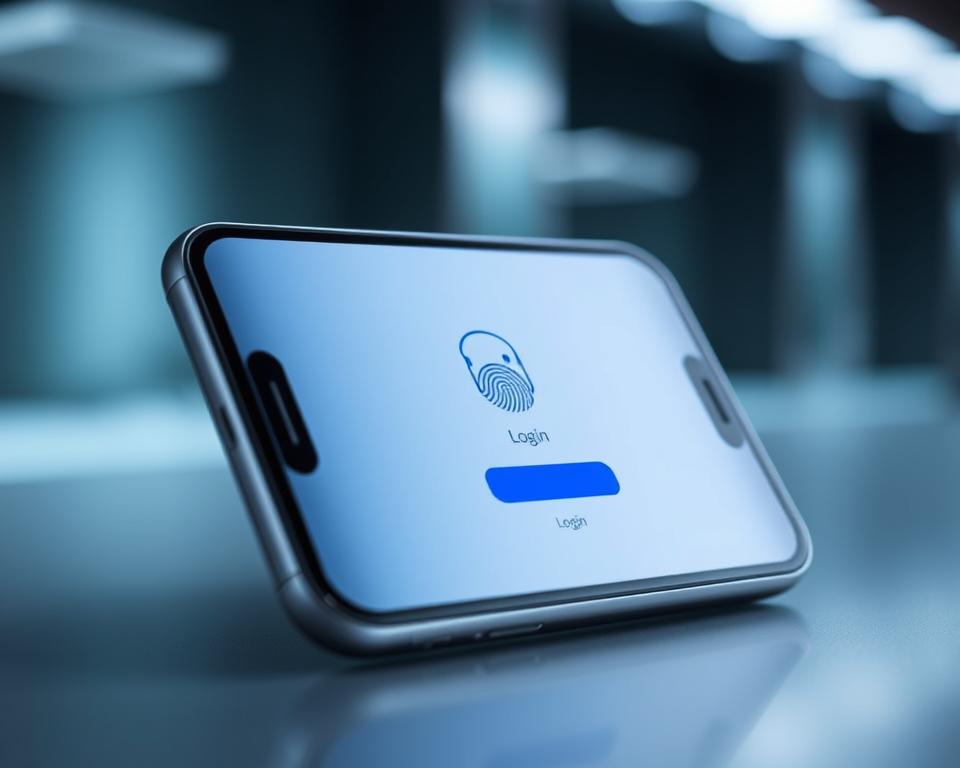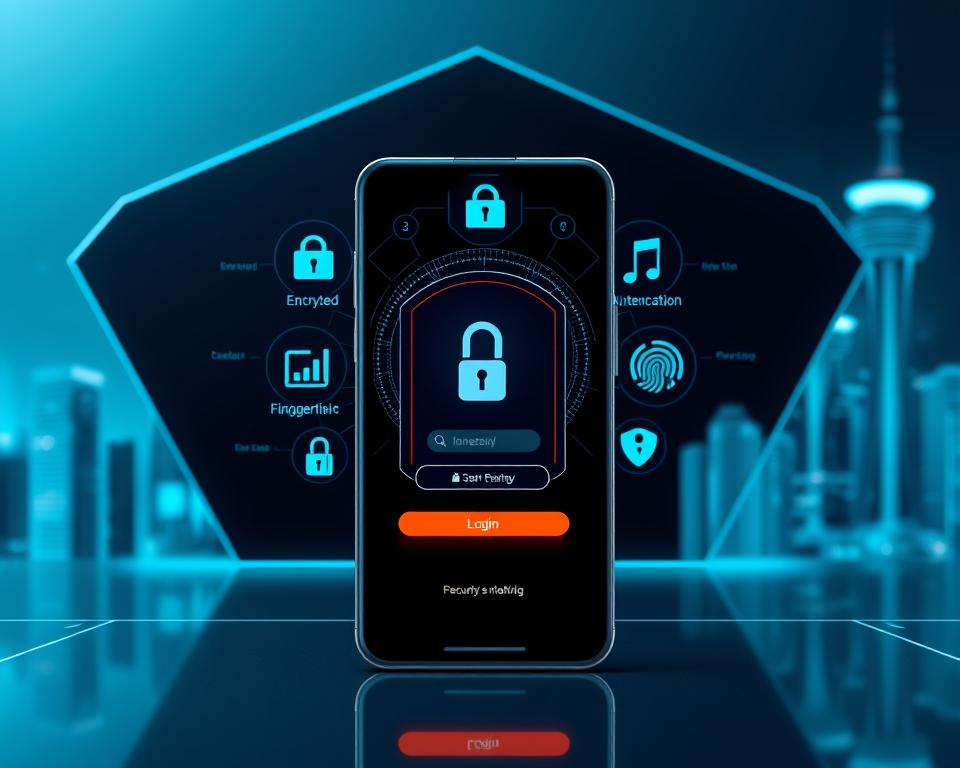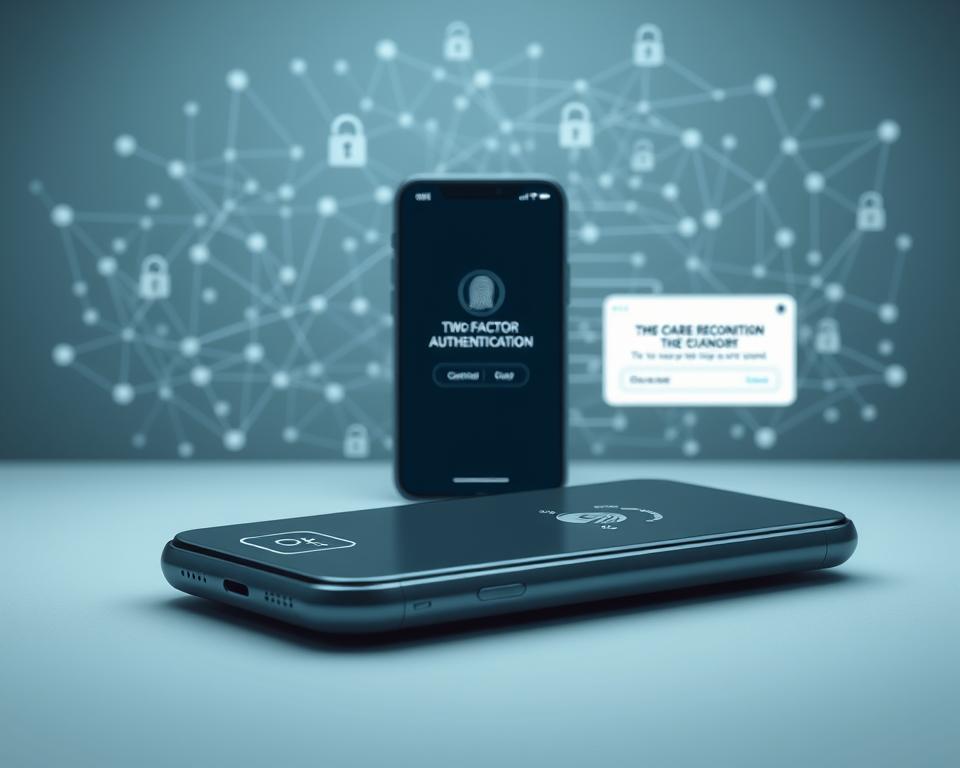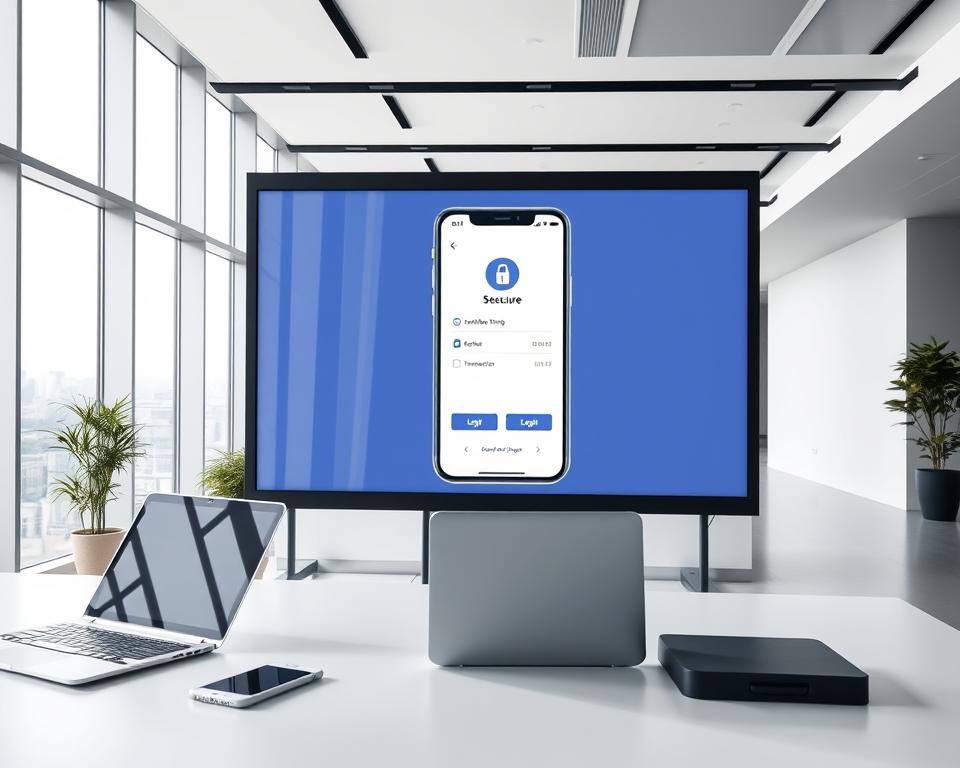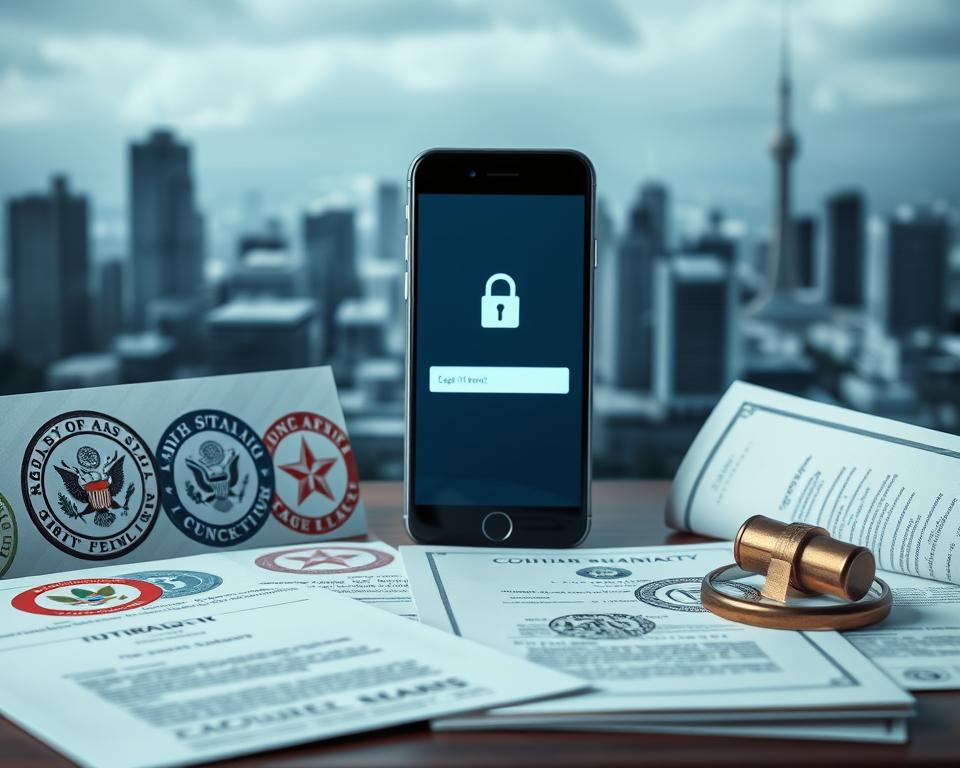Mobile banking security is a big deal for banks, as more people want to use mobile banking. It’s key to keep user data safe and stop fraud. Banks must follow rules to make sure their apps are up to code.
Keeping mobile banking safe means using strong login methods, encrypting data, and spotting fraud. By sticking to the rules, developers can make apps that keep your money safe and block cyber threats.
Building secure mobile banking apps is vital. It stops data leaks and keeps your info private. By focusing on security and following the rules, banks can earn your trust and offer a safe mobile banking experience.
Table of Contents
Introduction to Secure Mobile Banking Apps
Creating secure mobile banking apps needs careful thought about key features and rules. Knowing how important security and following guidelines are, developers can make apps that are safe and easy to use.
Key Takeaways
- Mobile banking security is a top priority for financial institutions
- Secure app development is crucial to protect sensitive user data
- Compliance guidelines must be followed to ensure regulatory requirements are met
- Data encryption and fraud detection systems are essential for mobile banking security
- Prioritizing mobile banking security helps to build trust with customers
- Secure app development requires careful consideration of essential features and compliance guidelines
The Evolution of Mobile Banking Security
Mobile banking security has changed a lot over the years. This change is thanks to new tech and smarter cyber threats. As more people use mobile banking, we need better security. Making secure mobile banking apps is key to keeping our money safe and stopping bad transactions.
Mobile banking has faced many challenges, like phishing attacks and malware infections. These problems have taught us a lot, helping us make safer mobile banking systems. Now, we face even more complex threats, so we must keep improving our security.
Important things that have helped mobile banking security grow include:
- Advances in encryption technology
- Implementation of multi-factor authentication
- Use of machine learning and artificial intelligence to detect and prevent threats
As mobile banking keeps changing, we must focus on security. We need to tackle old problems and stay ready for new threats.
Core Security Requirements for Mobile Banking Applications
Security is key in mobile banking apps. They need data encryption, authentication, and access controls. These are must-haves for secure app development.
Mobile banking apps must have secure data storage, communication protocols, and authentication. These features protect user data and keep it safe from unauthorized access. With these, users can trust their mobile banking apps.
Some important security features include:
- Secure data encryption to protect user data
- Multi-factor authentication to prevent unauthorized access
- Regular security updates and patches to prevent vulnerabilities
By focusing on security, mobile banking apps offer a safe and reliable service. This builds trust and confidence, which is vital for their success.
Essential Authentication Mechanisms
Authentication mechanisms are key in mobile banking apps. They keep user data safe and secure. Biometric authentication uses unique physical traits like facial, fingerprint, and voice recognition to confirm identities.
Multi-factor authentication adds an extra layer of security. It asks for more than one form of verification, like a password, PIN, or a one-time code sent to a phone or email. This makes it harder for hackers to get into the app.
- Improved security and reduced risk of data breaches
- Enhanced user experience and convenience
- Compliance with regulatory requirements
By using strong authentication like biometric and multi-factor, mobile banking apps offer a safe space for users. Here, they can handle their financial tasks without worry.
Data Encryption Standards and Protocols
Data encryption is key in keeping mobile banking apps safe. Encryption standards and protocols help keep user data private and secure. In the U.S., banks must follow strict encryption standards to protect user info.
SSL and TLS protocols are common in the industry. They create a safe link between your device and the bank’s server. This keeps data safe from hackers. Also, AES and RSA encryption are used to protect data both in transit and stored.
Here are some important encryption protocols found in mobile banking apps:
- SSL/TLS protocols for secure connections
- AES encryption for data at rest
- RSA encryption for secure key exchange
By using these data encryption standards and protocols, mobile banking apps keep user data safe. This protects against cyber threats and keeps users trusting the apps.
Secure API Integration Strategies
Mobile banking apps need secure API integration to keep data safe. API integration connects systems for smooth data sharing. For mobile banking, this means focusing on RESTful API security and OAuth.
RESTful API security protocols are key. They offer a standard for secure APIs. This includes encryption, authentication, and access control to protect data.
OAuth implementation is also vital. OAuth lets users share access to resources safely. It prevents unauthorized access and keeps data secure.
- Implementing API gateways to manage API traffic and prevent unauthorized access
- Using API management platforms to monitor and secure API interactions
- Enforcing OAuth implementation to ensure secure authorization and authentication
By using these strategies, mobile banking apps can keep data safe. This is crucial in today’s world, where cyber threats are common. Prioritizing API integration, RESTful API security, and OAuth ensures a secure experience for users.
Real-Time Fraud Detection Systems
Real-time fraud detection is key for mobile banking apps to stop financial losses. Adding security features like machine learning can spot and stop fraud. These algorithms check user actions and transactions for signs of trouble.
Machine learning is a big help in real-time fraud detection systems. It gets better at spotting threats as it learns from data. By looking at how users act and what they buy, it can warn the system to act fast.
Some good things about fraud detection systems are:
- They make things safer
- They help avoid big money losses
- They make the app better for users
In short, real-time fraud detection systems are vital for mobile banking apps. They keep money safe and protect user info. By using machine learning and other security tools, banks can give users a safe and trustworthy mobile banking experience.
Developing Secure Mobile Banking Apps: Essential Features and Compliance Guidelines
Creating secure mobile banking apps is key to protecting user data. Compliance guidelines are vital, guiding developers on what to do. They ensure the app is built with security in mind.
A solid security architecture is the backbone of a secure app. It includes data encryption, secure login methods, and access controls. By sticking to guidelines and adding these features, apps meet high security standards.
- Multi-factor authentication to prevent unauthorized access
- Encryption of sensitive data to protect it from interception
- Regular security updates and patches to prevent vulnerabilities
By adding these features and following guidelines, developers can make secure apps. A good security architecture is essential. It supports the app’s security features.
Regulatory Compliance Requirements
Creating secure mobile banking apps means following strict rules. It’s key to keep user data safe and ensure financial transactions are secure. Apps must meet GDPR compliance to protect user privacy and data.
Apps also need to follow PSD2 standards for safe payments and to prevent fraud. They must also stick to local banking laws, which change by country. Not following these rules can lead to big fines and harm the app’s image.
- Implementing robust data protection measures to ensure GDPR compliance
- Adhering to PSD2 standards for secure payment transactions
- Complying with local banking regulations and guidelines
By focusing on regulatory compliance and following the right standards, mobile banking apps can offer a safe and reliable experience. This approach also helps avoid penalties and keeps the app’s reputation strong.
User Privacy Protection Measures
Keeping user privacy safe is key in mobile banking app development. Developers must use strong security like data encryption and access controls. Mobile banking app development needs to know about privacy regulations well.
Some important steps to keep user privacy safe include:
- Using data encryption to protect sensitive info
- Setting up access controls, like multi-factor authentication, to limit data access
- Being open and getting user consent, so users can manage their data
Experts in mobile app development say keeping user privacy is crucial. It builds trust and loyalty with customers. By focusing on user privacy and data protection, mobile banking apps offer a safe and reliable experience.
Transaction Security Protocols
Keeping transactions safe is key in mobile banking apps. They use strong security to stop unauthorized access and keep user data safe. Payment gateway integration is a big part of this, making transactions secure and easy.
It’s also important to verify transactions. This includes real-time verification and two-factor authentication. These steps help stop fraud and keep accounts safe. They add an extra layer of security for users.
Mobile banking apps use SSL and TLS protocols for security. These protocols encrypt transactions, keeping user data safe. This makes transactions secure and trustworthy for users.
- Secure payment gateway integration
- Transaction verification methods
- Real-time verification
- Two-factor authentication
By focusing on transaction security, mobile banking apps offer a safe experience. This builds trust and is crucial for their success. It helps protect user data and stops fraud, making the experience better for everyone.
Mobile App Security Testing Procedures
Keeping mobile banking apps safe is key to protecting user data and stopping financial losses. Testing these apps for security is a must. It helps find and fix weaknesses. This includes using penetration testing to mimic real attacks and check how well the app defends itself.
Testing is vital to spot weak spots in mobile app security. This includes checking data encryption, how users log in, and API connections. Penetration testing is especially useful. It shows how well the app can stand up against attacks like phishing and malware. Regular testing helps developers fix issues, making the app more secure.
Some important steps in testing mobile banking apps include:
- Static analysis: looking at code for security problems
- Dynamic analysis: testing how the app works to find security issues
- Penetration testing: simulating real attacks to check defenses
By using these testing steps, developers can make sure their apps are safe. This protects user data and prevents money loss. Regular testing and penetration checks help find and fix security problems. This makes the app secure and trustworthy for users.
Incident Response and Recovery Planning
When a security breach happens, having a good plan is key. It helps reduce damage and get data back. This plan includes steps like stopping the breach, removing threats, and fixing systems.
Quick action is important when a breach occurs. It means starting security protocols to block more harm. It also means starting to get data back to normal.
Talking clearly with customers and others is also crucial. It’s important to be open and keep trust during the whole process.
- Containment: Immediate action to prevent the breach from spreading.
- Eradication: Removal of the threat to prevent future breaches.
- Recovery: Restoration of systems and data to a secure state.
By using these steps in a plan, companies can handle breaches better. They can recover data more effectively. This makes their incident response stronger.
Performance Optimization Without Compromising Security
In mobile banking apps, performance optimization is key for a smooth user experience. But, it can’t compromise security optimization. Finding a balance is vital to keep user data safe while offering quick services. Developers use caching, content delivery networks (CDNs), and code tweaks to achieve this.
For example, making a mobile banking app fast focuses on mobile app performance. It means fewer HTTP requests and using asynchronous code. This boosts speed and lowers security risks. By focusing on both performance optimization and security optimization, developers make a safe and quick app that users want.
Some important ways to improve performance without losing security include:
- Secure data transmission protocols
- Strong authentication and authorization
- Keeping the app updated to fix vulnerabilities
By using these methods, developers can make their mobile banking app fast and secure. This is crucial for gaining trust and loyalty in digital banking.
Third-Party Integration Security
Mobile banking apps rely on third-party integration for a smooth user experience. But, this integration can also bring security risks. It’s vital to do a detailed vendor assessment to check if the third-party vendors are secure.
This check looks at the vendor’s security steps, like integration security, to make sure they match the app’s security needs. Important things to look at include:
- Following industry standards and rules
- Using strong security tools, like encryption and access controls
- Doing regular security checks and tests
- Having plans for handling security issues
By carefully checking vendors and making sure they meet security standards, mobile banking apps can lower the chance of security problems.
It’s also key to have strong integration security steps, like API security and data encryption. This protects the data shared between the app and the third-party vendor. By focusing on third-party integration security, mobile banking apps can offer a safe and reliable experience for users.
Future-Proofing Mobile Banking Security
As mobile banking grows, future-proofing security is key to fight emerging threats. Banks face a big challenge: keeping up with new threats like AI and ML attacks. They need to use advanced security, like mobile banking security tools and protocols.
To keep mobile banking apps safe, strong security tests are vital. You can find great tips on security tips for banking application testing. Important steps include:
- Multi-factor authentication
- End-to-end encryption
- Regular security updates and patches
By taking these steps, banks can future-proof their mobile banking security. This protects customers’ sensitive info from
Conclusion
Security is key when making mobile banking apps. Financial institutions and their customers must prioritize it. The threat landscape keeps changing, and digital banking is more popular than ever.
Implementing strong security measures is essential. This includes using the right authentication, encrypting data, and detecting fraud in real-time. Banks must also test their security regularly and have plans for when something goes wrong.
The financial world is moving towards mobile banking. To keep trust and succeed, security and compliance must be top priorities. By following the best practices, banks can make mobile banking safe and exciting for everyone.








